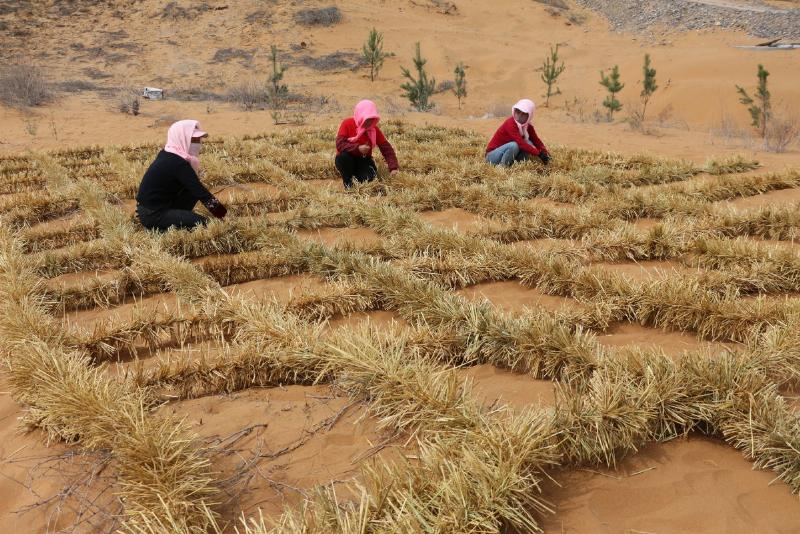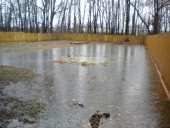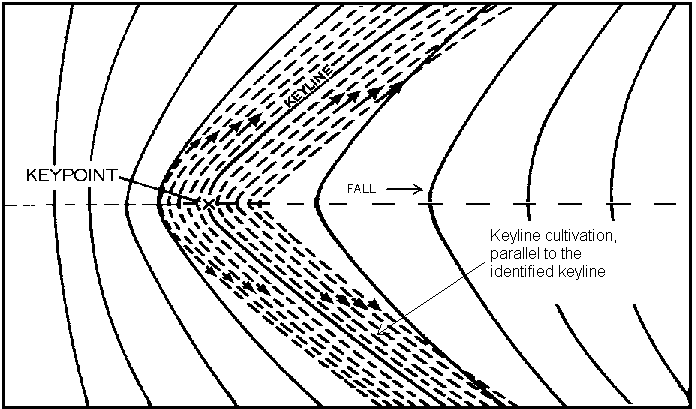
 5
5




 3
3




Invasive plants are Earth's way of insisting we notice her medicines. Stephen Herrod Buhner
Everyone learns what works by learning what doesn't work. Stephen Herrod Buhner
 4
4





Moderator, Treatment Free Beekeepers group on Facebook.
https://www.facebook.com/groups/treatmentfreebeekeepers/





 2
2




Michael Cox wrote:Are you aware of vetiver grass? It may need some help to get established if it is very arid, but forms dense hedges that stop both windblown and waterborn sediment movement. It has a very dense root system that goes deep for water once established and is an excellent companion plant for other species. It is used for stabilising land all around the world.
The only real climate requirement is that it can be killed by prolonged subzero temperatures. It can tolerate short frosts, but it may kill the top foliage and regrow from the roots.
In this image you can see the depth of soil that built up during seasonal rainfall over a 12 month period. The dark line is the original soil level.

 1
1




How Permies works: https://permies.com/wiki/34193/permies-works-links-threads
My projects on Skye: The tree field, Growing and landracing, perennial polycultures, "Don't dream it - be it! "
 1
1




Nancy Reading wrote:I remembered an awesome project - Mikhail set up 'water lenses' to concentrate the intermittent rainfall in the Sonoran desert and capture it into the ground - Awesome results so far, but not updated recently. It would be interesting to see how it's getting on this year.
 1
1




John Daley Bendigo, Australia The Enemy of progress is the hope of a perfect plan
Benefits of rainfall collection https://permies.com/t/88043/benefits-rainfall-collection
GOOD DEBT/ BAD DEBT https://permies.com/t/179218/mortgages-good-debt-bad-debt
 4
4




John C Daley wrote:This Chinese system is fantastic.












 4
4




Alex Black wrote:I can also think of some sort of wheel barrow type tool you could wheel around that could do this a lot faster than just 2 people going around & putting down straw & then pushing it down.
How Permies works: https://permies.com/wiki/34193/permies-works-links-threads
My projects on Skye: The tree field, Growing and landracing, perennial polycultures, "Don't dream it - be it! "
 2
2




Nancy Reading wrote:
Alex Black wrote:I can also think of some sort of wheel barrow type tool you could wheel around that could do this a lot faster than just 2 people going around & putting down straw & then pushing it down.
I believe they have recently been making sort of giant hairy straw rope and laying this across the dunes - like a giant biodegradable tinsel strand perhaps :)












 2
2





How Permies works: https://permies.com/wiki/34193/permies-works-links-threads
My projects on Skye: The tree field, Growing and landracing, perennial polycultures, "Don't dream it - be it! "
 1
1




Nancy Reading wrote:I just did a (duckduckgo) search for something like "checkerboard desert stabilisation" and various Chinese stories popped up. This might have been it:
source: chinadaily.com
They've also made a walk behind straw machine as you suggested!
http://www.chinadaily.com.cn/a/202102/05/WS601cb6d0a31024ad0baa781a.html
Other hits hint at improving the soil aggregation by culturing the bacteria on the crust of stabilised sand areas. That might be worth some more experimentation too.

|
You can thank my dental hygienist for my untimely aliveness. So tiny:
The new gardening playing cards kickstarter is now live!
https://www.kickstarter.com/projects/paulwheaton/garden-cards
|







